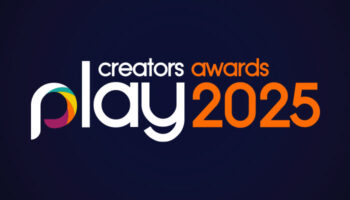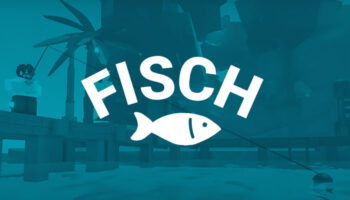“Complexity kills. Simplicity wins.” Florenci Verbon on pitching ideas to him at Educa Borras

What’s the best way to pitch to Educa Borras? Director General Florenci Verbon tells all…
Florenci, welcome… You’re coming to the Mojo Pitch – thank you! In terms of what inventors might want to show you, for what kind of product are you looking?
We have two companies with a factory in Spain each. Our catalogues are very diverse, from games, puzzles and arts and crafts to magic sets in the case of Educa Borras… From role play and outdoor to air, water, and ground remote control and slot cars in the case of FDJ NINCO, the subsidiary company.
Perfect. We’ll refer inventors to your full wish list, of course! But in terms of people pitching to Educa Borras are there traps of thinking into which people fall? Mistakes you think inventors could avoid?
I wouldn’t call it a mistake, but it’s a fact that 90% of the concepts pitched to us are games. Nothing wrong with that, but – given the extensiveness of our ranges – we’d love to be pitched other types of concept too.
Inventors, take note! And in terms of a pitch structure, what do you prefer inventors to do? Is there any particular order in which you like them to unpack information?
Often, in a couple of minutes you can already tell if the concept will fit the strategy of the company or not – whether they’ll have a slot in the catalogue or not… So a summary of what it’s all about helps. Then, if it looks like it could have a chance, then an extended explanation can follow. Unfortunately, pitches are forced within the famous 20 minutes – which is obviously insufficient! Therefore, it’s best if inventors concentrate on what they really consider unique and different – and start with the summary.
Yes, I’m inclined to agree with you. I’ll put in a link here to an article about pitching… It briefly talks about pitching a pitch; it fits in with what you’re saying…
Oh, really?

Yes, I think not being able to summarise is a common problem. So now, tell me… How complete does a concept need to be in order for you to feel it’s worth a look?
It depends on the concept, but we don’t mind being shown rough ideas requiring further development. Sometimes it can be just a technology not yet applied to a specific product but offering possible new features or functions… If it’s a game, though, well developed and tested game rules are appreciated.
What’s your view on Sell Sheets, Florenci? Or PowerPoint presentations?
Well, I personally think there’s nothing like a good, short video sizzle. As we all know, an image is better that 1,000 words. Sell Sheets and PowerPoints can follow later via email if required. What’s essential, though, is that the concept is well understood by just watching the video – without the need for further questions.
So a short sizzle video, but one that stands alone. What are your other thoughts on sizzles?
I’ve seen very efficient sizzle videos that explain, in a simple way, what the concept is about. A good image supported by the right voice over can help get the idea in just one minute… But I’ve also seen videos that I’ve had to review several times before I understood the concept.
And with those specifically, Florenci, where are they going wrong?
If it’s a game, just showing a group of people playing it isn’t clear enough at first sight. It just raises questions! A simple explanation on the voiceover could be better. Remember: the inventor relations guys will use the same video to convince the decision-making structure within their companies to consider an idea… People that didn’t get to see the inventor’s face or the live explanations.
Presumably, the wrong video loses a team’s attention pretty quickly?
Exactly right. You should see the faces of the team when a video is boring, hard to understand and not engaging at all – no matter how good the game may be. How can they tell?! I like to say, “Complexity kills, simplicity wins.” If I was an inventor, I’d really take care of the videos as my main tool.

And you’re right to point out, of course, that the sizzle gets shown to people outside the pitch room…
Yes! It’s also worth saying that, at last year’s Mojo Pitch, we interacted with a total of 45 inventors. As an average, you can count on three to four concepts per inventor… That’s a total of around 150 concepts presented in – on average – six minutes each.
It’s a lot!
It is a lot! Is it humanly possible to seriously analyse this tremendous flow of ideas with a solid criterion? So since the ‘rules of the game’ are set and the length of the pitch predetermined, my advice is: Don’t make your pitch fast, just make it short! Concentrate on your best ideas. If something looks interesting, we can get deeper later.
You’re a man after my own heart, Florenci. Does any of your advice change for an online pitch? Or is it all much of a muchness?
I always prefer face to face. If it’s a game and the prototype’s available, you can figure out how to play or even briefly play. We’ve all learned that a video call works as an alternative in most cases, though.
We need to wrap this up, but just before we do… What other advice might you give inventors here?
The community of inventors is very big and the concepts to be pitched are also big – overwhelmingly so. But the market is narrow and rapidly changing… Retailers are narrowing the funnel as well. And the consumers tend to simplify their purchases. E-commerce has completely changed purchasing habits and there’s less impulse buying as it happens in the shop floor…
Also, advertising has drifted towards social networks as TV audiences decrease at a high pace. So standing out from the crowd is difficult. Often, the product itself is not really the key to success: other variables of the marketing mix will determine it. Enhancing creativity in the product and going all the way in the marketing mix thinking may help.
Brilliant. Thanks for sharing your thoughts. Looking forward to seeing you!
–
To stay in the loop with the latest news, interviews and features from the world of toy and game design, sign up to our weekly newsletter here


























